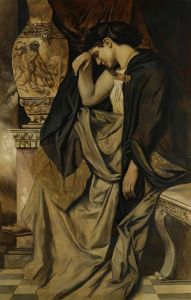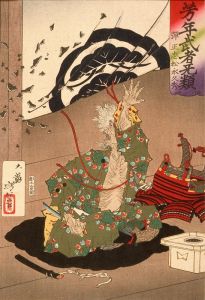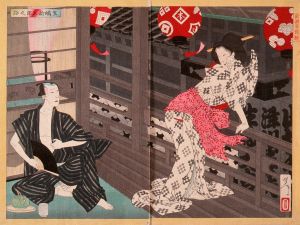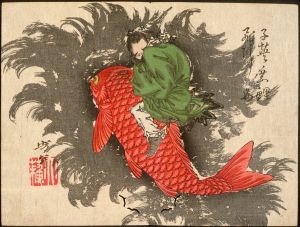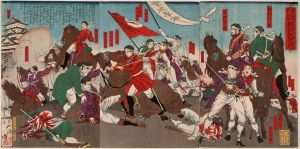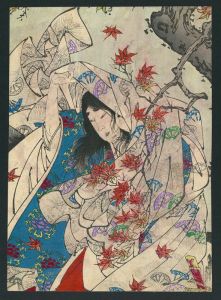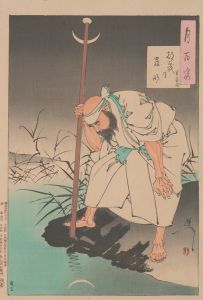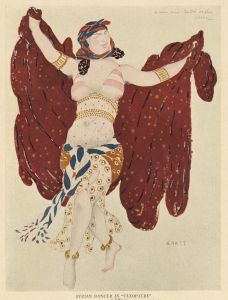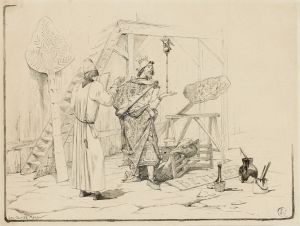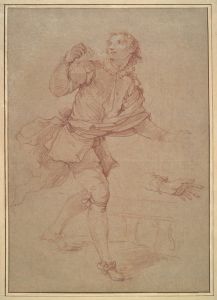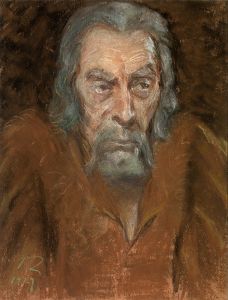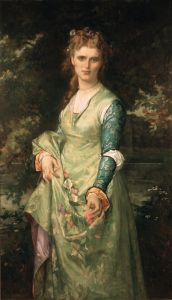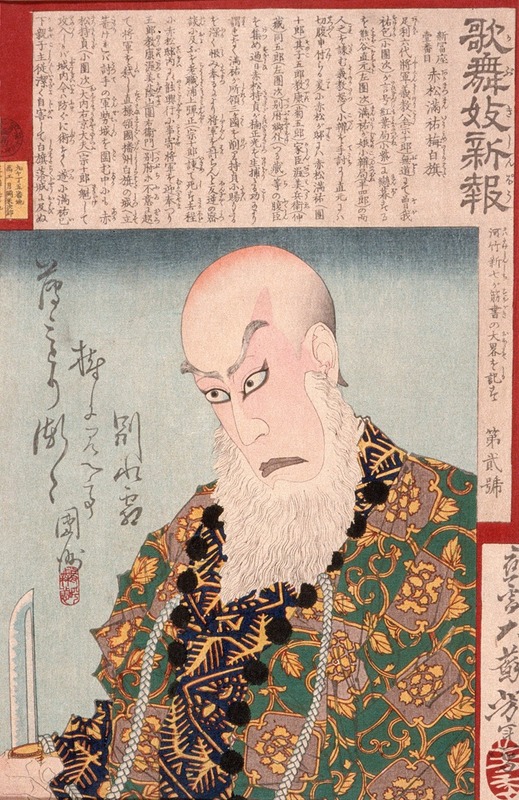
Ichikawa Danjūrō IX as Akamatsu Manyū Ume no Shirahata
A hand-painted replica of Tsukioka Yoshitoshi’s masterpiece Ichikawa Danjūrō IX as Akamatsu Manyū Ume no Shirahata, meticulously crafted by professional artists to capture the true essence of the original. Each piece is created with museum-quality canvas and rare mineral pigments, carefully painted by experienced artists with delicate brushstrokes and rich, layered colors to perfectly recreate the texture of the original artwork. Unlike machine-printed reproductions, this hand-painted version brings the painting to life, infused with the artist’s emotions and skill in every stroke. Whether for personal collection or home decoration, it instantly elevates the artistic atmosphere of any space.
Tsukioka Yoshitoshi was a prominent Japanese artist known for his work in ukiyo-e, a genre of woodblock prints and paintings that flourished in Japan from the 17th through 19th centuries. One of his notable works is the print "Ichikawa Danjūrō IX as Akamatsu Manyū Ume no Shirahata," which captures a moment from the kabuki theater, a classical Japanese dance-drama known for its stylized performances and elaborate costumes.
Ichikawa Danjūrō IX was one of the most famous kabuki actors of the Meiji period, a time when Japan was undergoing significant modernization and Westernization. Born in 1838, he was part of the illustrious Ichikawa family, which had a long tradition of kabuki acting. Danjūrō IX was renowned for his versatility and his ability to perform a wide range of roles, from heroic warriors to complex villains. His performances were instrumental in popularizing kabuki during a time when the art form was facing competition from Western entertainment.
The character Akamatsu Manyū Ume no Shirahata, portrayed by Danjūrō IX in Yoshitoshi's print, is a figure from Japanese history or legend, often depicted in kabuki plays. The precise details of the character's story can vary, as kabuki often takes creative liberties with historical and legendary figures to enhance the drama and entertainment value of the performance. The role would have allowed Danjūrō IX to showcase his dramatic range and his skill in embodying complex characters.
Tsukioka Yoshitoshi, the artist behind the print, was born in 1839 and became one of the last great masters of the ukiyo-e tradition. His work is characterized by its dynamic composition, vivid color, and a keen interest in capturing the human experience. Yoshitoshi's prints often depicted scenes from history, folklore, and the kabuki theater, reflecting the cultural and social changes of the Meiji era. His ability to convey emotion and movement in his prints made him a favorite among art collectors and enthusiasts.
The print "Ichikawa Danjūrō IX as Akamatsu Manyū Ume no Shirahata" is a testament to Yoshitoshi's skill in capturing the essence of kabuki theater. The artwork likely features Danjūrō IX in a dramatic pose, dressed in the elaborate costume typical of kabuki performances. The attention to detail in the costume and the actor's expression would have been designed to convey the intensity and emotion of the character's role.
Yoshitoshi's work, including this print, is significant not only for its artistic merit but also for its documentation of the cultural life of Japan during a period of transition. As Japan opened up to the world and embraced new ideas and technologies, traditional art forms like ukiyo-e and kabuki faced challenges but also found new audiences. Yoshitoshi's prints serve as a bridge between the past and the future, preserving the beauty and drama of traditional Japanese culture while also adapting to the changing times.
In summary, "Ichikawa Danjūrō IX as Akamatsu Manyū Ume no Shirahata" by Tsukioka Yoshitoshi is a remarkable example of ukiyo-e art that captures the spirit of kabuki theater and the talents of one of its most celebrated actors. Through this work, Yoshitoshi not only honors the legacy of Ichikawa Danjūrō IX but also contributes to the enduring appeal of Japanese art and culture.





